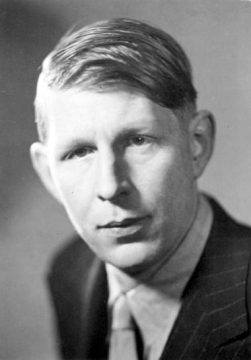Ian Sansom in The Guardian:
 AJP Taylor, in his famous account in The Origins of the Second World War(1961), claimed that a second world war “was implicit since the moment when the first world war ended”. It became explicit at exactly 4.30am on Friday 1 September 1939, when the German panzer divisions that had been gathering on the Polish border began their advance. The front page headline of the New York Times that day tapped out the news in telegraphese: GERMAN ARMY ATTACKS POLAND; CITIES BOMBED, PORT BLOCKADED; DANZIG IS ACCEPTED INTO REICH. On 3 September the British prime minister Neville Chamberlain broadcast to the nation on the BBC: the country, he announced, was at war with Germany. Auden’s poem consists of 99 lines, written in trimeters, divided into nine 11-line stanzas with a shifting rhyme scheme, each stanza being composed of just one sentence so that – as the poet Joseph Brodsky pointed out – the thought unit corresponds exactly to the stanzaic unit, which corresponds also to the grammatical unit. Which is neat. Too neat.
AJP Taylor, in his famous account in The Origins of the Second World War(1961), claimed that a second world war “was implicit since the moment when the first world war ended”. It became explicit at exactly 4.30am on Friday 1 September 1939, when the German panzer divisions that had been gathering on the Polish border began their advance. The front page headline of the New York Times that day tapped out the news in telegraphese: GERMAN ARMY ATTACKS POLAND; CITIES BOMBED, PORT BLOCKADED; DANZIG IS ACCEPTED INTO REICH. On 3 September the British prime minister Neville Chamberlain broadcast to the nation on the BBC: the country, he announced, was at war with Germany. Auden’s poem consists of 99 lines, written in trimeters, divided into nine 11-line stanzas with a shifting rhyme scheme, each stanza being composed of just one sentence so that – as the poet Joseph Brodsky pointed out – the thought unit corresponds exactly to the stanzaic unit, which corresponds also to the grammatical unit. Which is neat. Too neat.
Because of course this is only the beginning of an understanding of how a poem works. It takes us only to the very edges of the piece, to the outskirts of its vast territory. In order properly to comprehend it we would need to know why Auden chose this rigorous, cramped, bastard form. And why did he begin the poem with an “I”, undoubtedly the most depressing and dreary little pronoun in the English language?
I sit in one of the dives
On Fifty-second Street
Uncertain and afraid
As the clever hopes expire
Of a low dishonest decade:
Who is this “I”? And why are they sitting in a dive? And is it real or is it imagined, this place? And why the double adjectives?
More here.
